You notice your freezer door has been left open and panic immediately sets in! How long has it been left open? Hopefully, all of the food inside isn't spoiled and the freezer is still in working condition. Have you been wondering how long a freezer door can be left open without any problems arising? How long is too long for the freezer door to be left open? We have researched these questions and have the answers you're looking for.
Generally, a freezer door can be left open for 30 minutes to several hours without much risk. If your freezer reaches a temperature higher than 40ºF, your food may become contaminated or spoiled. Leaving your freezer door open for 24 hours or more may cause damage to both the freezer and the contents inside.
Continue reading to find out what happens and what to do in case you leave your freezer door open for too long. We will also explain how to safely defrost your freezer and give you some other freezer tips along the way. Without further ado, let's get into it!

What Happens If You Leave the Freezer Open Too Long?
Leaving a freezer open for a few hours won't cause much noticeable damage. The food may begin to defrost a little bit but shouldn't completely unthaw. The amount of food in your freezer will also determine how quickly the food begins to defrost.
Frozen food retains coldness better than air. A packed freezer leaves less room for airflow, allowing the frozen food to stay colder longer. Freezers with very little food in them will unthaw faster than a full freezer.
A freezer door left open too long can have several consequences. Leaving a freezer door open overnight or for 24 hours or more can cause many problems. Here are a few things you may encounter if your freezer is left open too long.
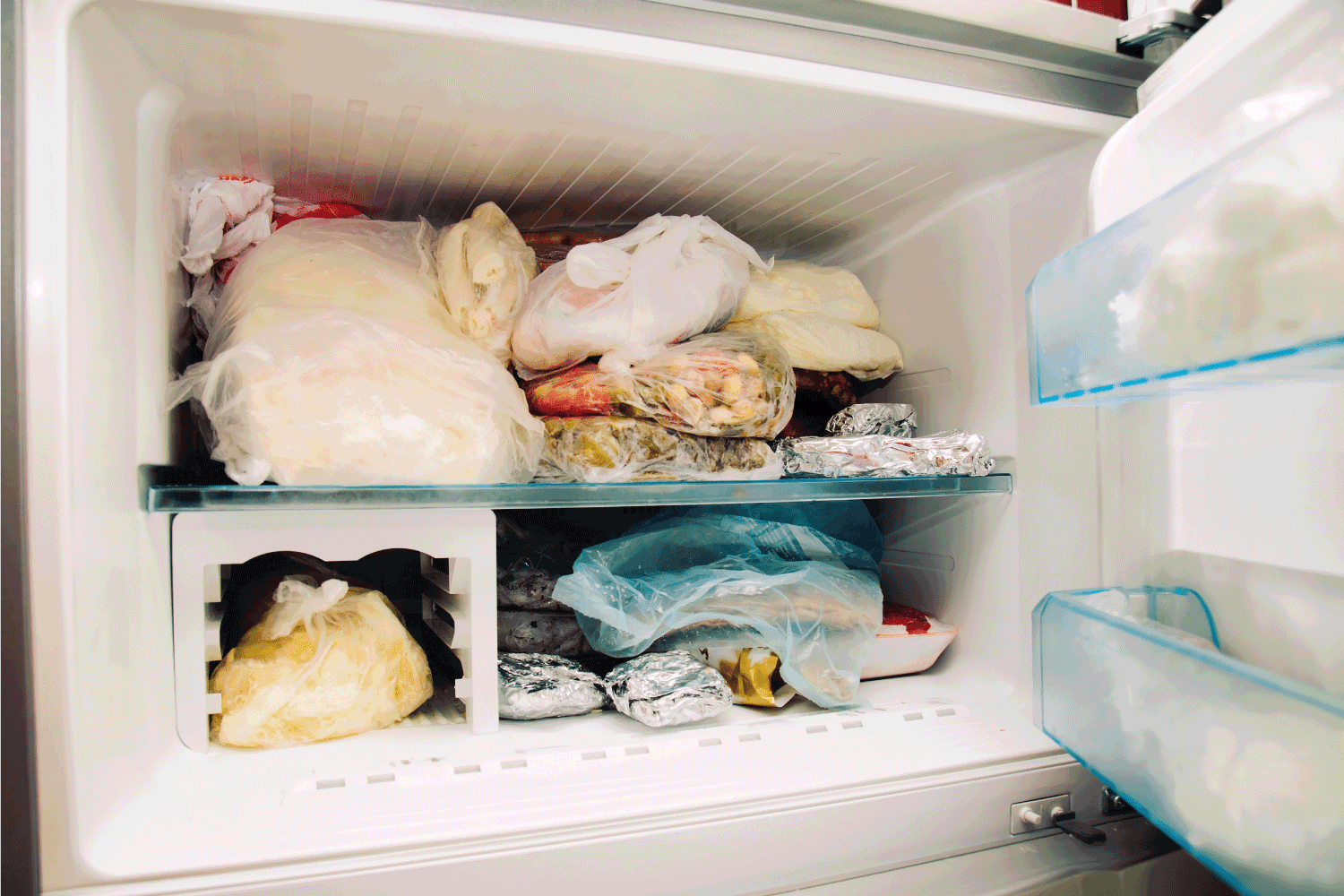
Food Spoilage and Health Risks
Perishable foods will begin to spoil when temperatures get above 40ºF. The USDA recommends discarding any food that has been thawed and held above 40ºF for more than 2 hours.
Microorganisms can begin to grow on the food if the surface of the food becomes warm enough, causing these foods to spoil.
Pathogens can also be spread from the liquid that is leaked from defrosted food. The juices from chicken, beef, or vegetables can spread and contaminate anything they come in contact with.
If food is stored in plastic or is tightly sealed, you may be able to wipe this liquid off. However, it may not be worth the risk.
This liquid can also seep onto the floor or in your fridge if you have a fridge-freezer combo. Keep pets and small children away from this bacteria-laden liquid. Ingesting these food pathogens can cause illness, and in some cases, these illnesses can be severe.
Moisture and Ice Formation
When a freezer door is left open, the warm air from outside will mix will the cold air of the freezer. Moisture will then begin to form. It then becomes difficult for the freezer to maintain its cool temperature.
Ice will begin to form and can build up around the edges of your freezer. It can even begin to form around the coils of your freezer. Ice on the coils will prevent air circulation and will hinder cooling.
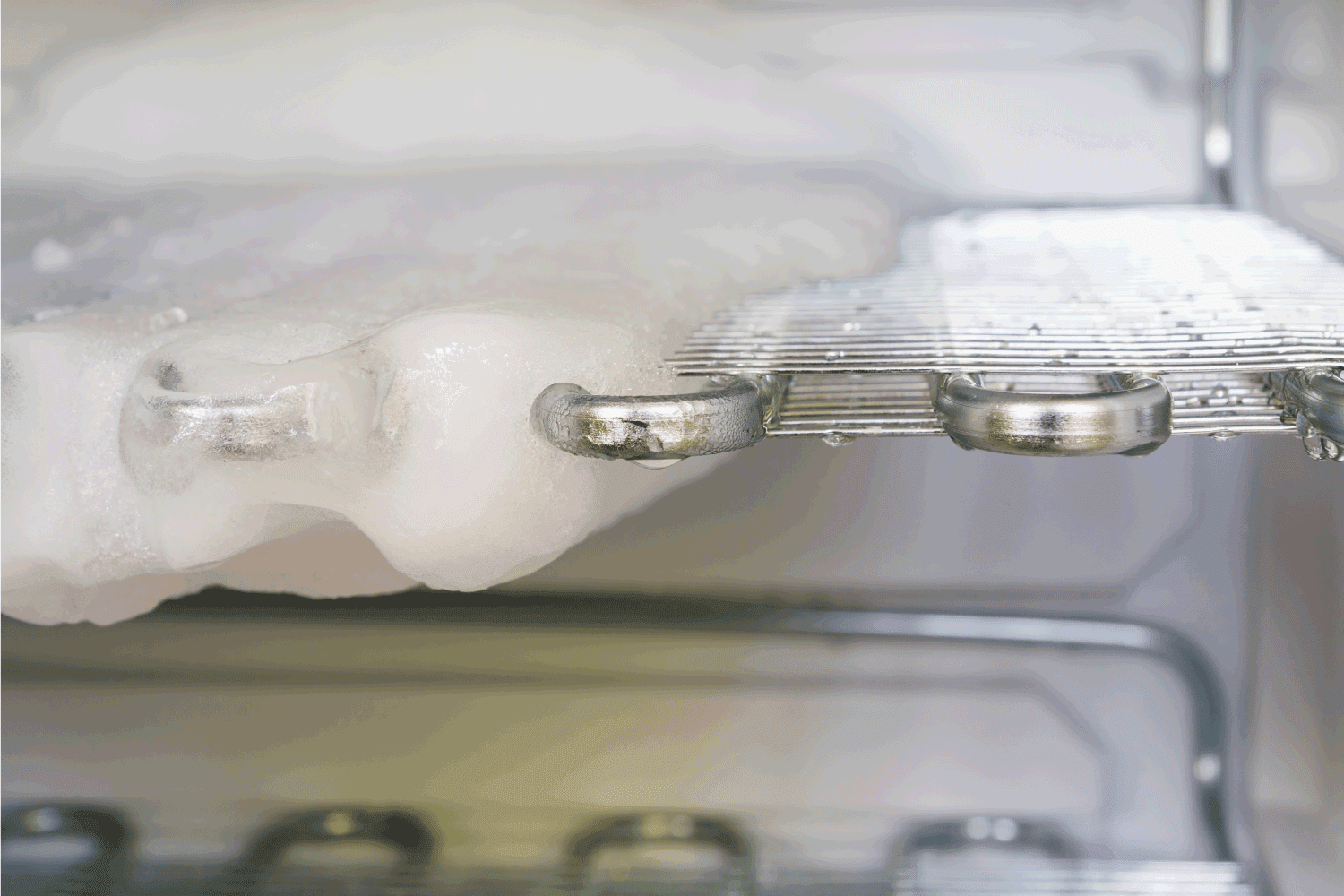
Overheating
Leaving a freezer door open will cause your freezer to work overtime. The freezer will work harder to try to keep the temperature down. The thermostat may fail in sending a signal to the compressor, causing the compressor to work twice as hard.
This can lead to overheating and can cause long-term damage to your freezer. Not only will have to replace your ruined food, but you may also have to replace the entire freezer!
How Do I Know if My Food is Salvageable?
Some food may be able to be salvaged depending on how long the door was left open. However, even if you think the door was left open for a short time, take every precaution to make sure your food is safe.
Check to see if the food is still cooled or if any ice crystals remain on the food. If the food seems wet, then the food may have started to defrost. The food is most likely safe if it is still mostly frozen and the packaging isn't soaked.
If the food has fully defrosted, check for further contamination. Any signs of mold, meat juice, unidentifiable liquids, or bacteria mean you should toss the product in the trash. If you have any doubt, throw it out!
What Should I Do if the Freezer Door is Left Open Overnight?
As noted earlier, a freezer door left open overnight can cause much more damage than a freezer left open for only a few hours. Do the following if you know your freezer door was left open overnight.
Check The Food
You will need to inspect the freezer and food to see what the temperature is like. If you see right away that all your food has defrosted or there is visible liquid, this isn't a good sign. If that is not the case, use a thermometer to check the food's temperature.
Examine food carefully that has reached a temperature higher than 40ºF. Thawed food can grow bacteria quickly. Throw the food away if it is above 40ºF, other food has leaked on it, it smells bad, or it says do not thaw, or use as soon as thawed.
Make Sure Your Freezer is Working
Check to see that your freezer is working properly. Most freezers won't be damaged if the door is left open overnight, but there is a possibility of this happening.
Freezers that struggle to work in warm climates or barely hit low temperatures may have trouble if the door is left open. Overheating can occasionally occur, so check to see if your freezer is working before you refill it again.
Can I Leave My Freezer Door Open to Defrost?
You may notice your freezer has formed ice crystals along the sides and top of your freezer. This extra ice can take up room and can prevent the door from sealing properly. It's recommended to defrosty our freezer at least once a year.
Defrosting a freezer is not difficult, but it does take some prep work and time. Follow these steps to safely defrost your freezer:
- Remove everything from inside your freezer. If your freezer is a fridge-freezer combo, empty the refrigerator as well. Store all of your food in coolers or a second freezer to keep it from thawing.
- Unplug the freezer and open the freezer door. You will want to keep the freezer door open during the defrosting process.
- Place towels or plastic liners in front of your freezer to soak up any liquid from the melting ice.
- Let the ice melt. To speed up this process you can place bowls of hot water in your freezer. The steam will melt the ice more quickly.
- Clean the inside of your freezer. Mix 4 cups of hot water with 1 tbsp. of baking soda and wipe down the surfaces in your freezer. Dry your freezer with a damp towel after cleaning.
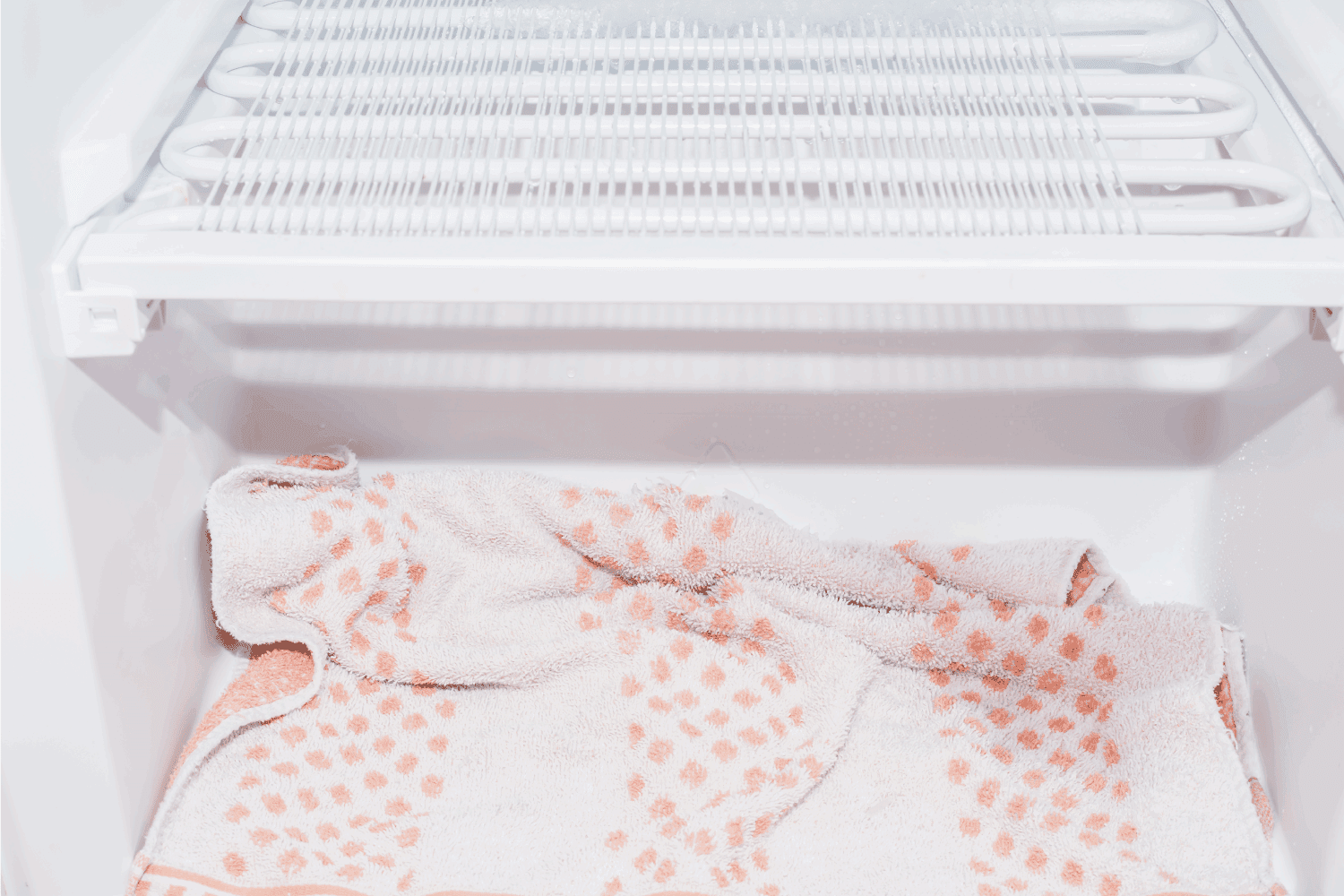
How Long After Defrosting a Freezer Can I Put Food Back In?
The defrosting process can take as little as 2 hours or as long as 24 hours depending on the thickness of the ice. As soon as all the ice has melted and your freezer is thoroughly cleaned, plug it back in.
Freezers typically take anywhere from 4-12 hours to reach a stable temperature of 0ºF. Touch the inside of the freezer to make sure it is cold before adding food. Once the freezer is ready, you may put your food back inside.
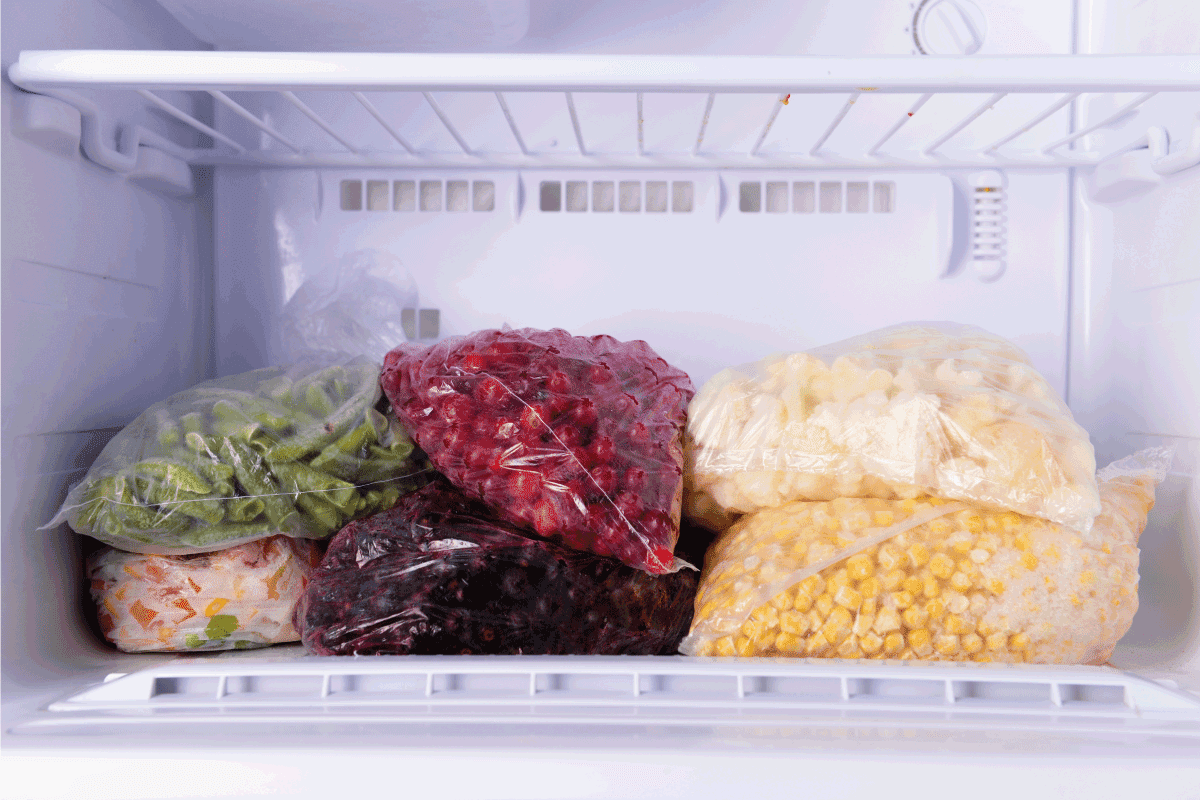
In Closing
If your freezer door has been accidentally left open, don't worry right away. Some food may be salvageable depending on the length of time the door was open.
If by chance the worst has happened and the door was left open for a significant amount of time, carefully inspect the food for spoilage and contamination, make sure the freezer is still working, and defrost and sanitize your freezer.
Check to make sure your freezer door is properly sealing so you don't have to deal with this problem again.
Click on the following links to learn more about freezers:
Where Should I Put My Freezer? [10 Locations To Consider]
How Big Is The Typical Freezer? [4 Sizes Explained]


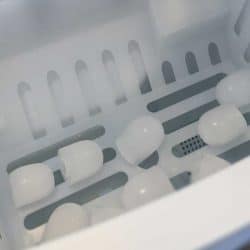
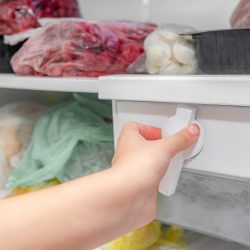
![A freezer accumulating ice on the side, How To Defrost Kitchenaid Freezer [French Doors Or Bottom]?](https://kitchenseer.com/wp-content/uploads/2022/07/A-freezer-accumulating-ice-on-the-side-250x250.jpg)

![white freezer refrigerator is opened - Why Does My Freezer Have Frost All Of A Sudden? [And How To Fix It]](https://kitchenseer.com/wp-content/uploads/2022/03/white-freezer-refrigerator-is-opened-250x250.jpg)